Central Vietnam Tour 2024: Discover the rich history of Hue’s Imperial City, the vibrant streets of Da Nang, the ancient charm of Hoi An, and the stunning beaches of Nha Trang. This tour offers a perfect blend of culture, adventure, and relaxation in Vietnam’s most captivating destinations.
I. Hue-Central Vietnam Tour
Hue, the former imperial capital of Vietnam, is renowned for its historic architecture, including the Imperial City, royal tombs, and ancient pagodas. Nestled along the Perfume River, Hue offers a serene atmosphere, rich cultural heritage, and vibrant cuisine, making it a must-visit destination in Central Vietnam.
- Imperial City (Citadel): A UNESCO World Heritage site, this walled fortress and palace complex was the seat of the Nguyen Dynasty.
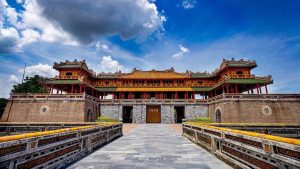
- Imperial Heritage: The city’s history as the imperial capital is evident in its architecture, festivals, and ceremonies. The annual Hue Festival celebrates this heritage with performances, parades, and cultural displays.
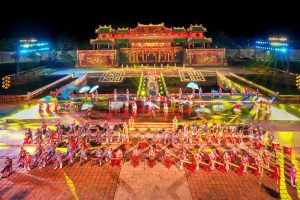
- Thien Mu Pagoda: An iconic seven-story pagoda overlooking the Perfume River, it is one of the oldest religious buildings in Vietnam.
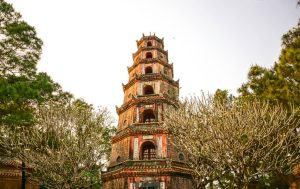
- Tombs of the Emperors: Elaborate mausoleums like those of Tu Duc, Khai Dinh, and Minh Mang showcase stunning architecture and artistry.
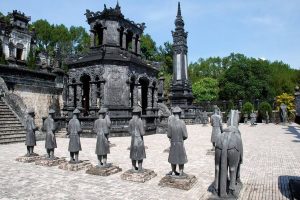
- Perfume River: Enjoy a scenic boat ride or a stroll along its banks, especially beautiful at sunset.

- Trang Tien Bridge: Designed by Gustave Eiffel, this historic bridge is beautifully lit at night.
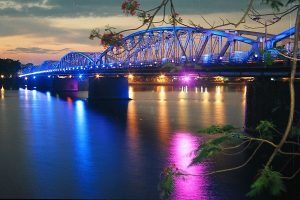
- Hue is famous for its Nha Nhac, or court music, which is recognized by UNESCO as an Intangible Cultural Heritage. Traditional dance and music performances are often held in the city’s historical sites.
- Cuisine: Hue’s cuisine is renowned for its sophisticated flavors and presentation. Signature dishes include bun bo Hue (spicy beef noodle soup), banh khoai (crispy pancakes), and various royal-inspired dishes that were once served to emperors.
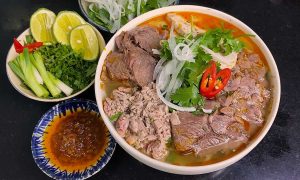
- The city is known for its traditional crafts, including embroidery, conical hats, and lacquerware. These crafts are often showcased in local markets and artisan villages.
II. Da Nang-Central Vietnam Tour
Da Nang, a coastal city in Central Vietnam, is known for its sandy beaches, vibrant nightlife, and modern urban vibe. It serves as a gateway to the UNESCO World Heritage sites of Hoi An and My Son.
- My Khe Beach: Known for its white sands and clear waters, it’s perfect for swimming, sunbathing, and water sports.
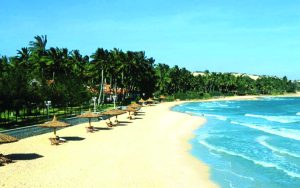
- Marble Mountains: A cluster of five marble and limestone hills with caves, temples, and stunning panoramic views.
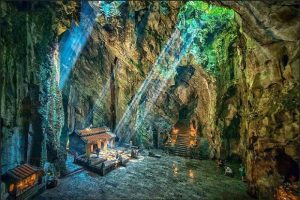
- Dragon Bridge: A modern architectural marvel that breathes fire and water during weekend night shows.
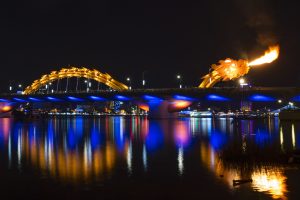
- Ba Na Hills: Featuring the famous Golden Bridge held by giant hands, this hill station also offers a theme park and French Village.
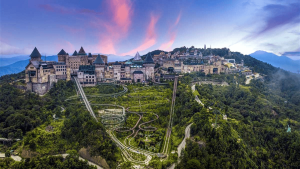
- Son Tra Peninsula: Home to the Linh Ung Pagoda with its towering Lady Buddha statue, providing sweeping views of the coastline.
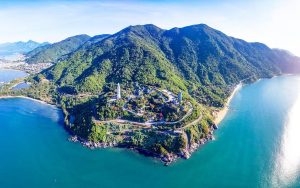
>>>Da Nang Attractions: TOP 10+ best places to visit in Da Nang
- Da Nang is known for its diverse and flavorful cuisine, featuring dishes like mi quang (turmeric noodles), banh xeo (Vietnamese pancakes), and fresh seafood. The city’s street food scene is lively and offers a taste of local flavors.
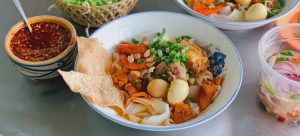
>>>Da Nang Foods Blog: TOP 9 iconic Da Nang foods you must try
- Da Nang hosts several cultural festivals throughout the year, including the Da Nang International Fireworks Festival, which attracts participants and spectators from around the world, and the traditional Tet Festival celebrating the Lunar New Year.
- The city preserves traditional arts such as tuong (classical Vietnamese opera) and bai choi (a form of folk singing and game).
III. Hoi An-Central Vietnam Tour
Hoi An, a charming ancient town in Central Vietnam, is renowned for its well-preserved architecture, historic trading port, and vibrant lantern-lit streets. A UNESCO World Heritage site, Hoi An offers a blend of Chinese, Japanese, and European influences. The town is famous for its tailor shops, traditional crafts, and delectable cuisine.
- Ancient Town: Wander through narrow streets lined with well-preserved buildings showcasing a mix of Chinese, Japanese, and European architectural styles.
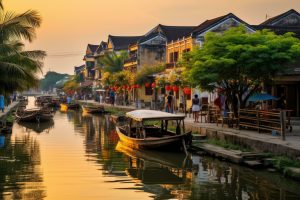
- Japanese Covered Bridge: An iconic 18th-century wooden bridge featuring intricate carvings and a small temple.
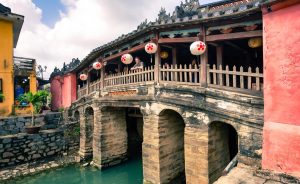
- My Son Sanctuary: A day trip from Hoi An, this ancient Hindu temple complex reflects the Cham civilization’s rich history.
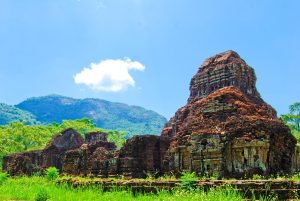
- Hoi An celebrates numerous festivals, including the Full Moon Lantern Festival, where the town is illuminated by colorful lanterns, and the Hoi An Lantern Festival, a vibrant event featuring traditional music, dance, and performances.

- Hoi An’s cuisine is famous for its unique flavors and dishes, such as cao lau (a noodle dish with pork and herbs), banh mi (Vietnamese sandwich), and white rose dumplings. Street food stalls and local eateries offer a rich culinary experience.
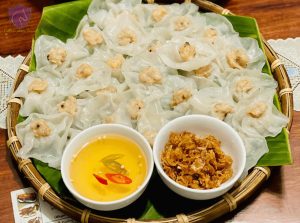
- The town is known for its traditional crafts, including silk weaving, lantern-making, and pottery. Visitors can explore artisan workshops and purchase handcrafted souvenirs.
- Hoi An is renowned for its bespoke tailoring, with numerous tailor shops providing custom-made clothing. This tradition reflects the town’s historical role as a trading hub.
>>>The best way to explore Hoi An: Hoi An travel guide in 2024
Central Vietnam Tour concludes with a memorable journey through Hue’s imperial grandeur, Da Nang’s modern charm, and Hoi An’s ancient allure. From historic sites and scenic beaches to vibrant markets and cultural heritage, this tour encapsulates the essence of Central Vietnam’s rich and diverse offerings.
![]() Visa FOPA Company
Visa FOPA Company
📞+84 906 044 975 (Mr. Do)


